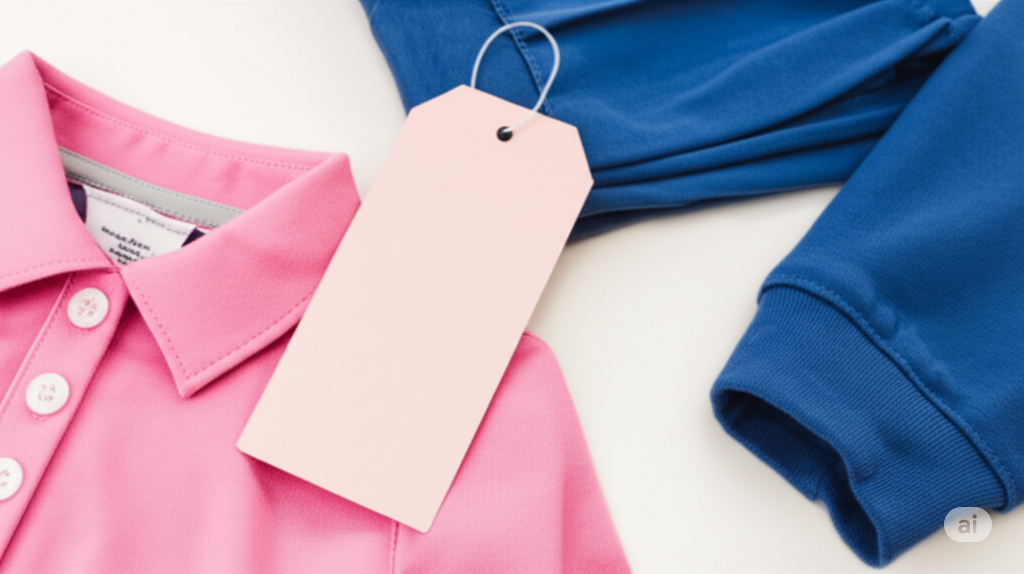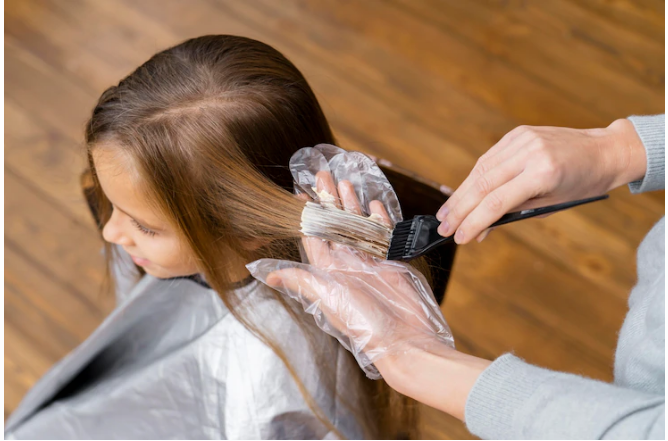The cost of a school uniform can be a significant burden for families. Surprisingly, an often-overlooked expense exists within this market. It is the “pink tax.” This refers to the price difference between products marketed towards girls and boys. Typically, girls’ items cost more. This disparity also extends to school uniform pieces. Today, we will explore this issue. We will also offer practical tips. These tips will help parents manage these costs effectively.
Understanding the Pink Tax on School Uniforms
The pink tax is not an actual tax levied by the government. Instead, it is a pricing strategy. Retailers often charge more for products specifically designed and marketed for girls. This happens across various industries. Toys, toiletries, and clothing are common examples. Unfortunately, the school uniform market is no exception. You might find that a girl’s school uniform skirt costs more than boys’ trousers of similar material and quality. Similarly, girls’ blouses can be pricier than boys’ shirts.
Several factors contribute to this price discrepancy. Marketing plays a significant role. Often, girls’ clothing features embellishments. These can include extra detailing, different cuts, or added accessories. These features can lead to higher production costs. However, sometimes the price difference seems arbitrary. It appears to be based solely on the gendered marketing of the item. Furthermore, perceived value can influence pricing. Retailers might believe consumers are willing to pay more for girls’ items. This perception can drive up prices. Therefore, understanding these underlying factors is crucial. It helps parents become more informed consumers.
Identifying Price Discrepancies in School Uniforms
Recognizing the pink tax in school uniforms requires careful observation. First, compare similar items for boys and girls. Look at basic pieces like shirts, trousers, skirts, and sweaters. Note any price differences. Pay attention to the materials used. Check for variations in design and any added features. Sometimes, a slight design variation might justify a small price difference. However, significant price gaps for essentially similar items are red flags. Second, consider the sizing. Sometimes, girls’ sizes might be priced differently even if the amount of fabric used is similar to boys’ sizes. Third, examine bundled deals or package offers. See if the pricing within these bundles reflects a gender-based disparity. By being vigilant and comparing prices diligently, parents can identify instances of the pink tax on school uniforms.
The Financial Impact on Families
The pink tax on school uniforms might seem like a small amount per item. However, these small differences can add up significantly over time. Especially for families with multiple daughters. The cumulative effect can strain household budgets. These extra costs can impact a family’s ability to afford other essential items for their children. These include school supplies, extracurricular activities, or even necessities. Moreover, this price disparity can reinforce harmful gender stereotypes. It subtly communicates that girls’ needs or preferences come at a higher cost. Therefore, addressing the pink tax in the school uniform market is not just about saving money. It is also about promoting fairness and challenging gender-based price discrimination. Consequently, awareness of this issue is the first step towards finding solutions.
Practical Tips for Managing School Uniform Costs
Despite the existence of the pink tax, parents can take several steps to manage school uniform costs effectively.
- Plan and Buy Early: Avoid last-minute shopping. Retailers often offer better deals and discounts early in the school uniform season. This allows you ample time to compare prices across different stores and online platforms. Planning also reduces the likelihood of settling for more expensive options due to limited availability closer to the start of the school year.
- Compare Prices Diligently: Do not buy the first school uniform item you see. Compare prices across various retailers. This includes brick-and-mortar stores, online marketplaces, and even school-affiliated suppliers. Look for sales, discounts, and promotional offers. Sometimes, different retailers offer the same school uniform items at significantly different prices. Online price comparison tools can be very helpful in this process.
- Consider Gender-Neutral Options: If your school’s uniform policy allows, consider purchasing gender-neutral school uniform pieces. For instance, plain polo shirts or neutral-colored trousers can often be worn by both boys and girls. These items might not be subject to the same gender-based pricing. Check if your school has specific requirements regarding the cut or style of certain garments. If not, opting for gender-neutral alternatives can be a cost-effective strategy.
- Explore Second-Hand Uniform Markets: Many schools or community groups have second-hand school uniform sales or swap programs. These are excellent ways to acquire gently used uniforms at a fraction of the original cost. Check your school’s website, newsletters, or local community boards for information on such initiatives. Participating in these programs is not only budget-friendly but also promotes sustainability by giving perfectly wearable clothes a second life.
- Buy Quality Over Quantity (When Possible): While the initial cost might be higher, investing in durable, high-quality school uniform items can save money in the long run. Better quality uniforms are likely to withstand frequent washing and wear for a longer period. This means you may not need to replace them as often as cheaper, less durable alternatives. Check fabric quality and stitching before making a purchase.
- Look for Sales and Discounts: Keep an eye out for seasonal sales events. Back-to-school sales, holiday sales, and end-of-season clearances can offer significant discounts on school uniform items. Sign up for email newsletters from uniform retailers to receive notifications about upcoming sales and exclusive offers. Many retailers also offer student discounts or loyalty programs that can help reduce the overall cost.
- Utilize Private Label Brands: Some retailers offer their private label versions of school uniform items. These are often priced more competitively than name-brand uniforms. Compare the quality and features of private label options with branded ones. You might find that private label alternatives offer similar quality at a lower price point.
- Check for Bundle Deals: Retailers sometimes offer bundle deals where you can purchase a set of school uniform items (e.g., shirts, trousers, and a sweater) at a discounted price compared to buying each item individually. Assess your child’s needs and see if these bundle deals offer genuine savings. However, ensure that all items in the bundle are necessary to avoid buying unnecessary clothes.
- Be Resourceful with Alterations and Repairs: Instead of immediately replacing a slightly damaged school uniform item, consider simple repairs or alterations. Hems can be taken down as your child grows. Minor tears or loose buttons can often be easily fixed at home or by a local tailor at a minimal cost. This can significantly extend the lifespan of the uniform and delay the need for replacement.
- Advocate for Fair Pricing: Consider raising the issue of the pink tax on school uniforms with school administrators or parent-teacher associations. Collective action can sometimes encourage schools to partner with uniform suppliers who offer fair and transparent pricing for all students, regardless of gender. Writing to retailers or consumer advocacy groups can also help raise awareness about this issue and potentially lead to changes in pricing practices.
Conclusion
The pink tax on school uniforms is a subtle but significant financial burden on families. By understanding this pricing phenomenon and implementing the practical tips discussed above, parents in Pune, Maharashtra, India, and elsewhere can navigate the school uniform market more effectively and manage costs. Being informed consumers, comparing prices, considering gender-neutral options, and exploring second-hand markets are all valuable strategies. Ultimately, addressing the pink tax requires both individual action and broader awareness to promote fair pricing for all school uniform items.



